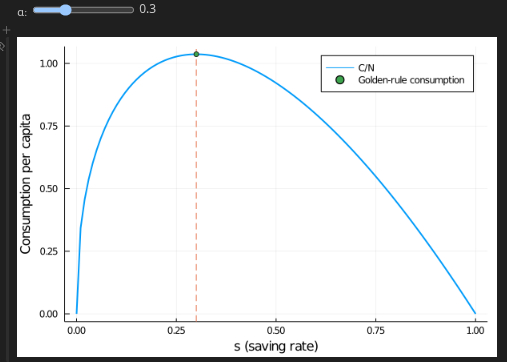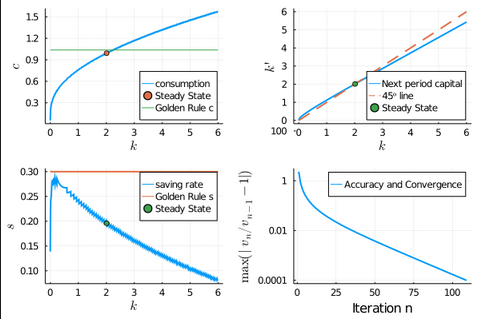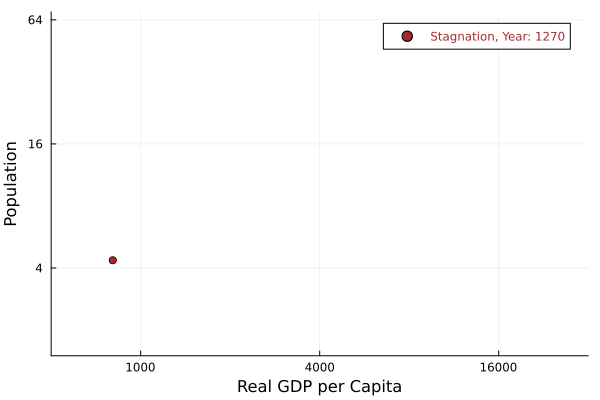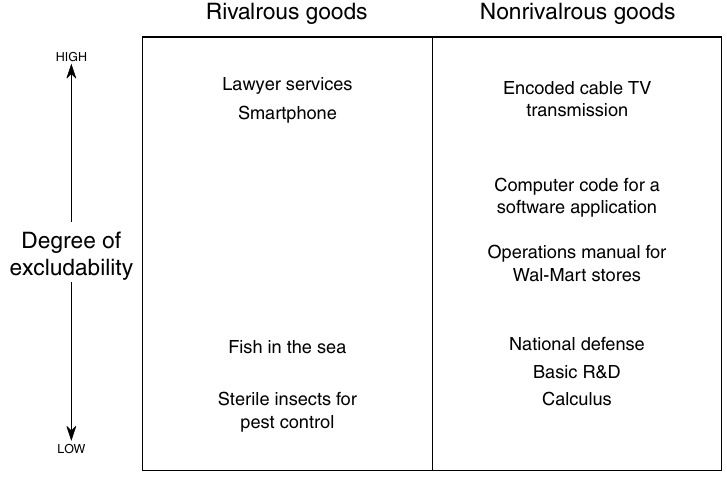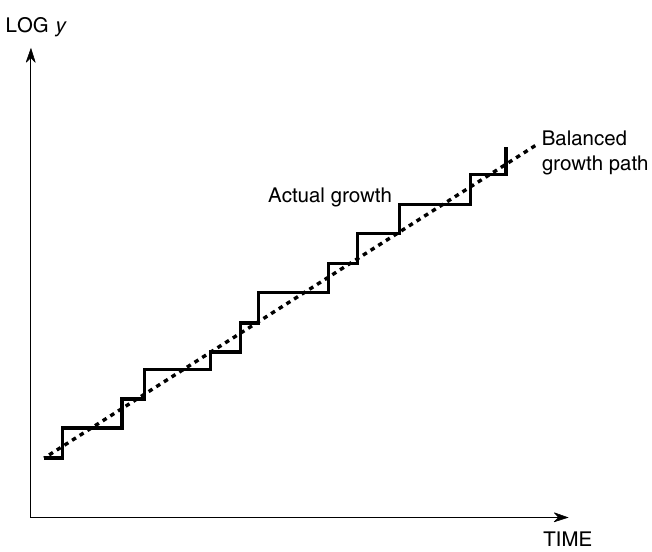This page contains links to interactive notebooks that I created for (beginning) graduate Macroeconomics course at the LSE (EC413), 2023-2024, with Matthias Doepke and Silvana Tenreyro as lecturers. My students found them extremely useful. Built using the Pluto and PlutoUI packages of Julia ecosystem, these are mainly meant to help students visualise the models and build intuition by enabling them to do comparative statics (and dynamics) simply by dragging a slider! No knowledge of Julia is required, but interested students can reveal the underlying code and use it as a basic intro to Julia and numerical methods in Macroeconomics.
- To see the full notebooks, dockerised on Binder, click on the teaser images, or open the notebook page and click on the link for the full notebook. (takes few minutes to load, look at the status button at the bottom right)
- To see a preview (no interactivity), load the static notebooks (fast).
- There are few half-complete notebooks, related to business fluctuations and monetary economics, as well as some underlying mathematical concepts such as contraction mapping, that I’m looking forward to complete and upload as soon as possible. Stay tuned for them!
- Don’t hesitate to reach out if you have any comments on the content, or need hints for implementing something similar for your course!

